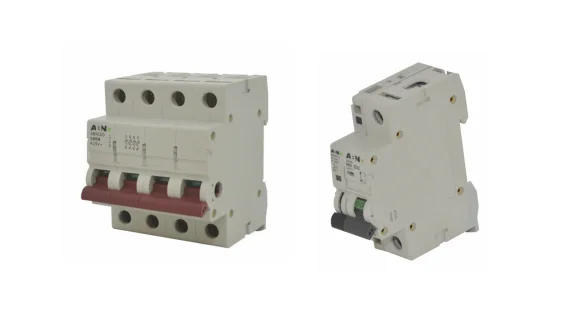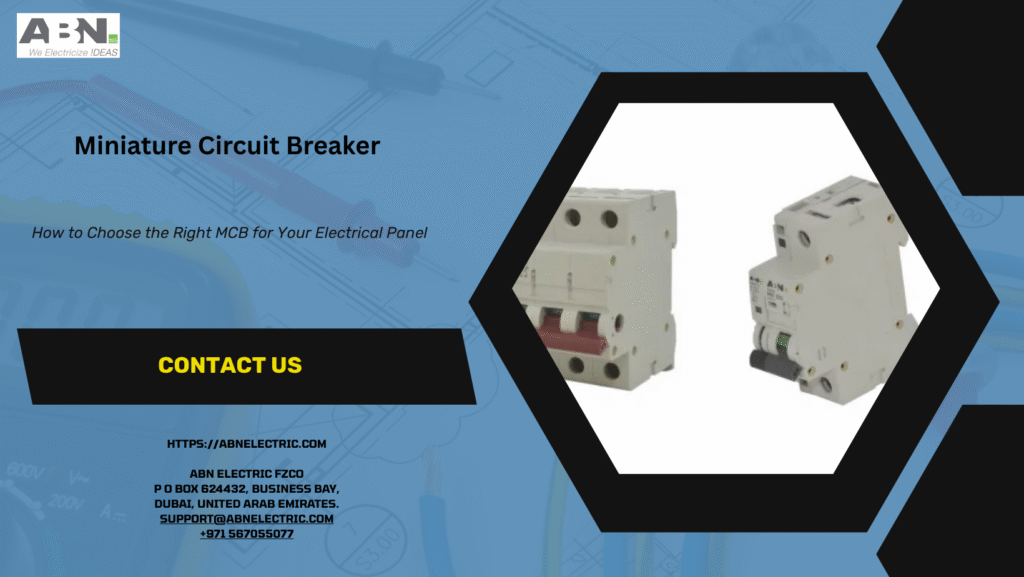Your electrical panel is the heart of your home’s power system, and at the core of its safety features lies the Miniature Circuit Breaker (MCB). Choosing the right one is crucial for protecting your property, appliances, and loved ones from electrical hazards. This guide will walk you through everything you need to know to select the correct MCB, ensuring your electrical system operates safely and efficiently.
An MCB is an automatic switch designed to protect an electrical circuit from damage caused by excess current from an overload or a short circuit. When it detects a fault, it trips, interrupting the current flow and preventing potential disasters like electrical fires or equipment damage. However, not all MCBs are the same. Selecting one with the wrong specifications can lead to frequent, unnecessary tripping or, more dangerously, a failure to trip when it’s most needed.
This post will explore the critical factors you need to consider, from current ratings and tripping curves to breaking capacity. By understanding these key elements, you’ll be equipped to make an informed decision for your electrical panel.

Understanding MCB Fundamentals
Before selecting an MCB, it’s essential to understand its core functions and types. A Miniature Circuit Breaker serves two primary protective purposes: overload protection and short-circuit protection.
- Overload Protection: This occurs when a circuit draws more current than it is designed to handle for an extended period. A common example is plugging too many high-power appliances into a single outlet. The MCB’s thermal mechanism heats up and trips the circuit to prevent overheating wires.
- Short-Circuit Protection: This happens when there’s a direct connection between the live and neutral wires, causing a sudden, massive surge of current. The MCB’s magnetic mechanism reacts instantly to this surge, tripping the circuit in a fraction of a second to prevent significant damage.
Key Specifications to Consider
Based on the information from ABN Electric, a reliable miniature circuit breaker should offer high short-circuit capacity and protection against both overloads and short circuits. Let’s break down the key specifications you will encounter.
- Poles: This refers to the number of circuits the MCB can protect. They are available in various configurations, including 1P (single-pole), 2P (double-pole), 3P (triple-pole), and 4P (four-pole), as well as 1P+N and 3P+N. The choice depends on whether you have a single-phase or three-phase supply.
- Current Rating (Amperes): This is the maximum current an MCB can carry continuously without tripping. Ratings can range from 0.5A up to 125A. It’s vital to match this rating to the load of the circuit and the gauge of the wire it protects.
- Breaking Capacity (kA): This indicates the maximum fault current the MCB can safely interrupt without being damaged. Standard values are 6kA and 10kA. A higher breaking capacity means the MCB can handle more severe short-circuit events, which is critical in commercial and industrial settings.
How to Select the Right Miniature Circuit Breaker
Choosing the right miniature circuit breaker involves a systematic approach. Follow these steps to ensure you select the appropriate device for your needs.
- Determine the Circuit’s Load
First, calculate the total electrical load of the circuit the MCB will protect. This is the sum of the power consumption (in watts) of all appliances and devices that will be connected to that circuit. You can then convert this to amperes using the formula:
Amps = Watts / Volts
For example, if a circuit powers appliances totaling 2,000 watts on a 120-volt system, the current is approximately 16.7 amps. In this case, a 20A MCB would be appropriate. Always choose an MCB with a rating slightly higher than the circuit’s normal operating current but lower than the capacity of the wiring.
- Understand MCB Tripping Curves (Types)
MCBs are classified into different “types” based on their tripping characteristics, which define how quickly they respond to overcurrents. This is crucial because different types of electrical loads have different startup currents.
- Type B: Trips at 3 to 5 times the rated current. It is ideal for residential and light commercial applications with resistive loads, such as lighting, general-purpose outlets, and appliances with small motors.
- Type C: Trips at 5 to 10 times the rated current. This is the most common type used in commercial and industrial settings for circuits with inductive loads, like small motors, fluorescent lighting, and other devices with moderate startup currents.
- Type D: Trips at 10 to 20 times the rated current. It is designed for heavy industrial applications with high inrush currents, such as large motors, transformers, and welding equipment.
Selecting the wrong type can cause nuisance tripping (if too sensitive) or fail to provide adequate protection (if not sensitive enough).
- Verify the Breaking Capacity
The required breaking capacity depends on the electrical installation’s location. A home electrical panel typically requires a miniature circuit breaker with a breaking capacity of 6kA. However, for industrial or commercial buildings located close to a transformer, the potential fault current can be much higher, necessitating an MCB with a 10 kA or higher rating. Always consult local electrical codes or a professional electrician to determine the correct breaking capacity for your installation.
- Check for Regulatory Compliance (UL vs. Non-UL)
It’s important to use MCBs that meet the safety standards for your region. In North America, products certified by Underwriters Laboratories (UL) are standard. UL-certified MCBs have undergone rigorous testing to ensure they meet strict safety and performance criteria. While non-UL variants are available and may be suitable in other regions, using UL-certified products provides an extra layer of confidence in their reliability and safety.
Finalizing Your Selection
Choosing the right miniature circuit breaker is a critical step in ensuring the safety and reliability of your electrical system. By carefully evaluating the circuit’s load, selecting the correct tripping curve, and verifying the breaking capacity, you can protect your property from the dangers of overcurrents.
Remember to consider factors like the number of poles needed for your system and to always opt for certified products that comply with local regulations. When in doubt, consulting a qualified electrician is the best course of action. A professional can help assess your specific needs and ensure your electrical panel is equipped with the proper protection.

